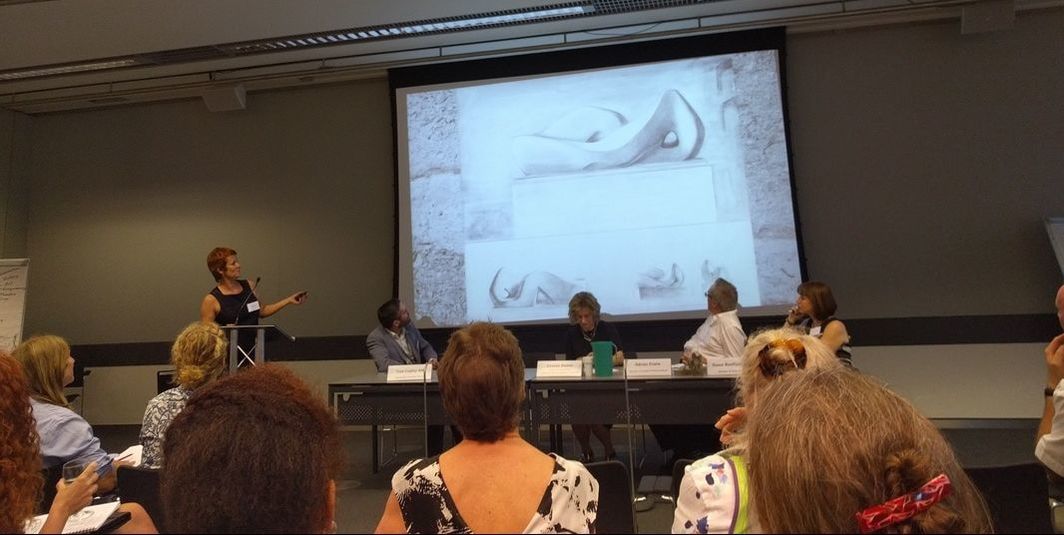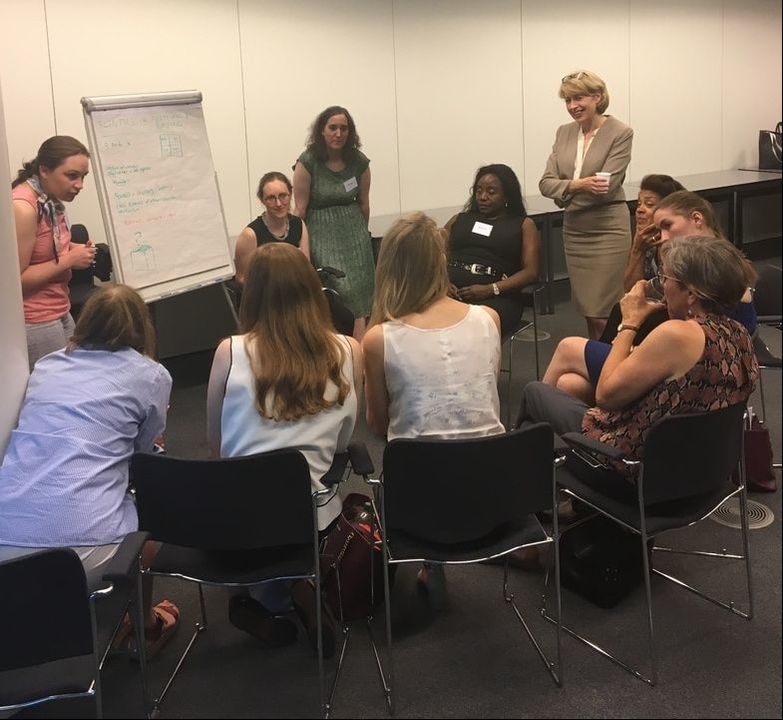Engineering meets Art
This project aims to bring engineering together with sculpture to commemorate the engineering and technical work of women during the First and Second World War through the use of the four empty plinths on the corners of the Waterloo Bride in London
Millions of women were brought into engineering, manufacturing and construction roles during the two World Wars in the UK, and there is no better icon to represent this work than the Waterloo Bridge itself, which was built by a significant proportion of female construction workers who replaced their male counterparts who were away at war. Known as the Ladies Bridge, the Waterloo Bridge has become a modern day focus for much recent activity to bring the stories of these women welders and construction workers to light, thanks to photographic evidence being uncovered to verify the stories that have, until now, been passed on by word of mouth for over 75 years.
In parallel to the engineering stories relating to Waterloo Bridge, another story emerges of the competition that took place in the late 1940s to design sculptures to sit on the four plinths of the bridge, which resulted in 16 unbuilt designs by World renowned artists including Barbara Hepworth.
This project aims to bring engineering together with sculpture to commemorate the engineering and technical work of women during the First and Second World War through the use of the four empty plinths on the corners of the Waterloo Bride in London
Millions of women were brought into engineering, manufacturing and construction roles during the two World Wars in the UK, and there is no better icon to represent this work than the Waterloo Bridge itself, which was built by a significant proportion of female construction workers who replaced their male counterparts who were away at war. Known as the Ladies Bridge, the Waterloo Bridge has become a modern day focus for much recent activity to bring the stories of these women welders and construction workers to light, thanks to photographic evidence being uncovered to verify the stories that have, until now, been passed on by word of mouth for over 75 years.
In parallel to the engineering stories relating to Waterloo Bridge, another story emerges of the competition that took place in the late 1940s to design sculptures to sit on the four plinths of the bridge, which resulted in 16 unbuilt designs by World renowned artists including Barbara Hepworth.
School Outreach Project Proposal
The Waterloo Bridge Sculpture project is based on the merging of two historically significant events. In the Second World War women construction workers played a significant role in the rebuilding of the Waterloo Bridge in London, a remarkable feet of engineering that these women were never credited for – until recently. In the late 50s, Barbara Hepworth was among a group of leading artists who submitted designs for four stone sculptures to be erected on the plinths on either end of the bride – none of which were ever commissioned.
Today we are proposing a unique activity combining engineering and art history to inspire the next generation of engineers, based on these two historical stories.
For the first time, permission has been granted by the Barbara Hepworth Trust to use the drawings and models of the sculptures for educational purposes.
The outreach activity proposed will tell the story of the Bridge build and the sculpture competition, and challenge the students to use this as inspiration to come up with their own designs to celebrate these women construction workers – one of which will be proposed for full scale production and erection on or near the plinths of the Waterloo Bridge.
The project will make use of 3D printing equipment commonly found in schools today in order to produce scale models of the designs, and the plan is to host an exhibition of the shortlisted entries.
Beyond the culmination of the competition, the outreach activity can continue to be delivered by schools looking to combine art and engineering in order to appeal to the next generation of inspired engineers.
The Waterloo Bridge Sculpture project is based on the merging of two historically significant events. In the Second World War women construction workers played a significant role in the rebuilding of the Waterloo Bridge in London, a remarkable feet of engineering that these women were never credited for – until recently. In the late 50s, Barbara Hepworth was among a group of leading artists who submitted designs for four stone sculptures to be erected on the plinths on either end of the bride – none of which were ever commissioned.
Today we are proposing a unique activity combining engineering and art history to inspire the next generation of engineers, based on these two historical stories.
For the first time, permission has been granted by the Barbara Hepworth Trust to use the drawings and models of the sculptures for educational purposes.
The outreach activity proposed will tell the story of the Bridge build and the sculpture competition, and challenge the students to use this as inspiration to come up with their own designs to celebrate these women construction workers – one of which will be proposed for full scale production and erection on or near the plinths of the Waterloo Bridge.
The project will make use of 3D printing equipment commonly found in schools today in order to produce scale models of the designs, and the plan is to host an exhibition of the shortlisted entries.
Beyond the culmination of the competition, the outreach activity can continue to be delivered by schools looking to combine art and engineering in order to appeal to the next generation of inspired engineers.
|
19 June 2017 Ideas Event, City Hall
During International Women in Engineering Week in June 2017 the iconic City Hall was the venue of the pre-launch of this programme.The organisers hosted invited guests to attend an evening session to hear further details of the project and give their ideas and participation.We heard from speakers including:
|



